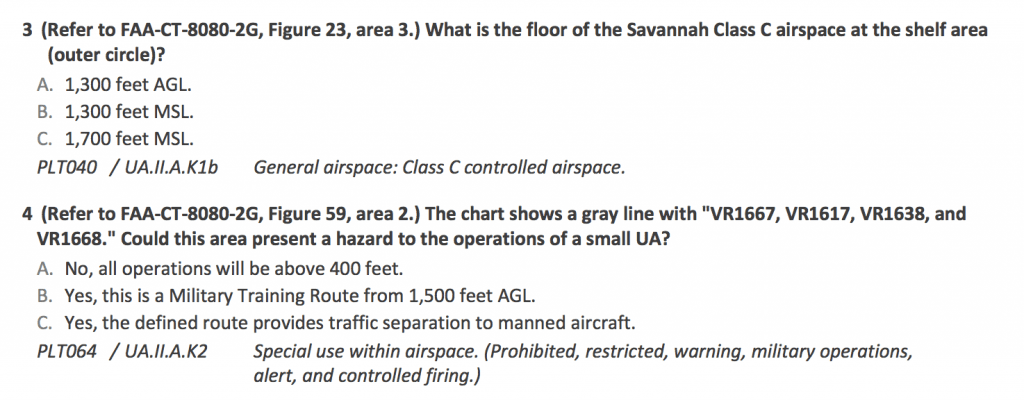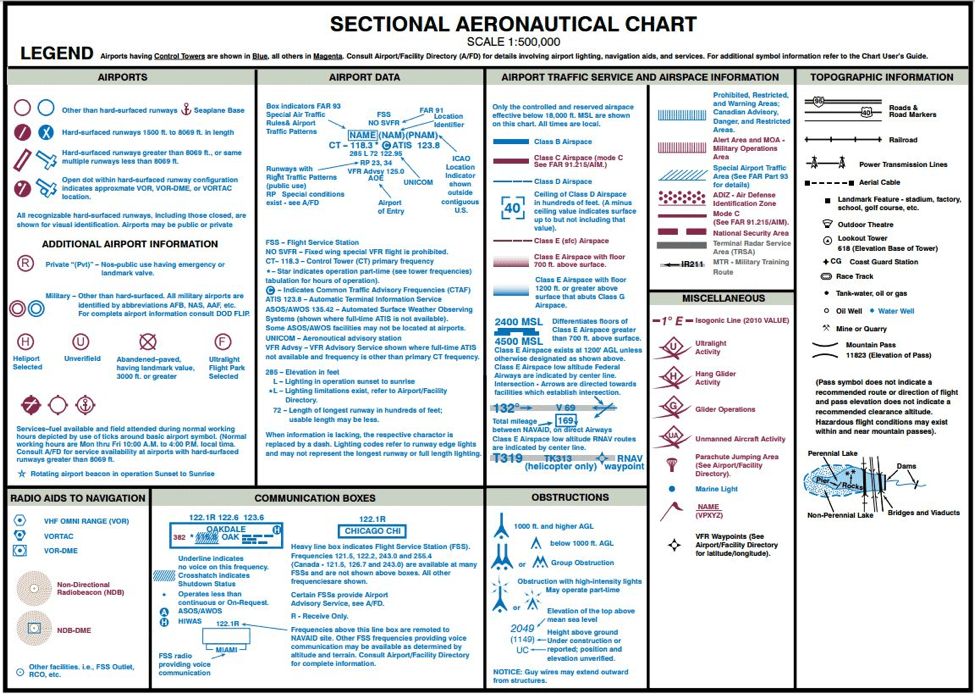Over the last few weeks, I’ve been getting a lot of questions about how to read a VFR Sectional Chart. I think a lot of people are seeing practice questions like this from the FAA’s sample UAG exam, and they’re trying to figure it out if they really need to be able to interpret a Sectional Chart during the UAG Part 107 Aeronautical Knowledge Test.
Short answer? Yes, you’ll need to understand how to read a Sectional Chart.

What’s a Sectional Chart?
A VFR Sectional Chart is like a road map for the sky. It shows geographical and manmade obstacles, certain airspace boundaries and a plethora of other important pieces of information in amazing detail.
If you’re looking at a VFR Sectional Chart for the first time, it can be a bit overwhelming.
But it gets easier, I promise.
On your Aeronautical Knowledge Test, the chances of you needing to interpret something on a Sectional Chart are pretty high. We’ve dedicated an entire lecture in Drone Pilot Ground School to teaching people How to Read a Sectional Chart, and I just wanted to share one of the images from one of our slides to show you the kind of detail that we go into:

And that’s just airspace designations!
Fortunately, during your in-person test, you’ll be given a Supplement of charts and graphs, and in that resource you’ll find the following legend:

So no, you won’t need to memorize each and every minute detail of a Sectional Chart, but you WILL need to spend some time familiarizing yourself with how they work, and how to recognize and perform common interpretations like Maximum Elevation Figures, airspace classes, MSL vs. AGL altitudes, latitudinal and longitudinal charting, and more.
All of this (and more!) covered in Drone Pilot Ground School 🙂

